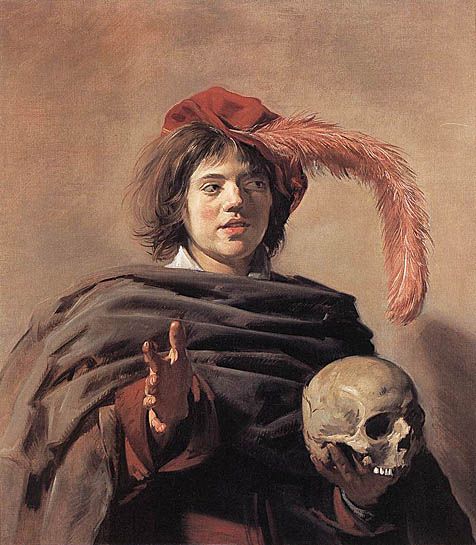
The Fantasy family, from left to right: Baba, Trophy, Euthanasia (“Annie”), Pete. (credit: Adult Swim)
While I was doing preliminary research for this blog post, I stumbled upon a new Adult Swim cartoon by the name of Teenage Euthanasia, produced by PFFR. Having premiered on Adult Swim just last month, the show is created by Alyson Levy, an artist of PFFR fame, and Alissa Nutting, a writer and English professor at Grinnell College. PFFR is known for its extremely surrealistic programs, including Wonder Showzen, Xavier Renegade Angel, and The Shivering Truth; the latter two also aired on Adult Swim. I was actually originally going to write about the pitch-black comedy puppet show/cult-classic Wonder Showzen (of which I am also a fan), but as I was looking deeper into PFFR’s works, Teenage Euthanasia caught my attention as it is new and I had never seen it before. Although Teenage Euthanasia isn’t quite as extreme in the surrealism department as some of PFFR’s other work, it does still has its moments, and it definitely has their signature satirical, black-comedic tone and occasional grotesque imagery embedded in the writing. It also has a surprising amount of world-building for a seven-episode Adult Swim cartoon, shown through dialogue as well as the scenery. Thus, I decided to scrap my old idea and write about Teenage Euthanasia instead.
Set in “The Franchise Territory of Florida” in the not-so-distant future, Teenage Euthanasia focuses on the dysfunctional Fantasy family, who run the Tender Endings Funeral Home. Some years after giving birth to the eponymous Euthanasia (more commonly known as “Annie”) and subsequently abandoning her to be raised by her grandmother Baba and uncle Pete while she runs away to live a wild life, deadbeat former-teen mom Trophy Fantasy commits suicide via drug overdose and orders for her body to be sent back to Annie and the funeral home in her note. But from the power of Annie’s tears as well as Baba’s embalming fluid, Trophy is accidentally resurrected…but now, she’s a zombie with death powers and a swarm of beetles living inside of her!
Trophy decides to use her second chance at life to finally learn how to be a real mother to Annie, who is now a sensitive, optimistic teenage girl trying to smile in the face of the cruel world and jaded adults around her while also trying to fit in with her peers at school. That’s not to say Trophy doesn’t still engage in wild antics along the way, though, including taking at-risk teenage girls out drinking during their court-sanctioned therapy session, participating in a spring break reality show for prisoners to avoid prison time herself, and switching bodies with a squirrel with her death powers to avoid chaperoning Annie on a field trip. After all, Trophy still has her pre-death personality, and there are plenty of men in Florida who don’t mind if their date’s been dead for a good while or two, as well as plenty of booze to be drank!
The Tender Endings Funeral Home specializes in customized funerals, with the motto “have your grief your way”. These can range from holding college spring break parties celebrating the lives of frat boys who died on other spring break parties, to replacing the third person in a polyamorous relationship where the former third person has died. It is run by Baba, a stern babushka stuck in her own ways from the vaguely-Slavic “Old Country” who prizes her custom-made embalming fluid, and her eccentric son Pete, a neurotic mama’s boy/manchild in his early 30’s who can taste the exact emotions in people’s tears, and who Baba has an iron grip on. Each episode pairs two of the main characters and explores their dynamics; for example, Trophy and Pete are a Florida Woman-Florida Man sibling duo, while Baba and Trophy bicker and fight until they inevitably end up in some very bad situations.
Teenage Euthanasia takes place in what is known as the Franchise Territory of Florida, a satirized version of the real-life Florida. Set around ten or so years in the future, societal standards have dropped even lower than they already are now. Annie attends “George W. Bush Memorial High School”, a run down school which constantly receives budget cuts, and where students watch whatever movie the teachers have laying around that day (most of the time, it’s Remember the Titans) in lieu of learning (or they learn from blatantly misogynistic lessons). Instead of actual parole officers, the state uses unpaid, underage tattletales called “Lil P.O.s”, and instead of hiring trained people, the police force will hire any sadistic teenager who walks in due to budget cuts. All marriages are set to auto-expire after 24 hours without a daily renewal due to Florida’s divorce rate topping 90%, and “morning-after hotdogs” can be bought from any hotdog stand in the Franchise Territory.
With Teenage Euthanasia‘s futuristic setting comes all sorts of advanced technology. From touch-screen mirrors that insult your appearance and eavesdrop for the sake of hyper-targeted advertising, to advanced paternity tests in the form of a fun board game for kids, highly-advanced technology is integrated into society to where the characters think nothing of it. And, of course, there’s plenty of holograms to be found, too. Smartwatches can project holographic images into the air for anyone to see, and certain professions such as teachers and lawyers have been replaced with holograms. The gravestones even have buttons that project holographic images of the deceased which are interactive! And, as well as in the mirrors, invasive targeted advertising is everywhere in this universe, with people sometimes being forced to press a bunch of holographic buttons before they can proceed with whatever it was that they were doing. Of course, the characters don’t pay much mind to this either. One thing that is consistent with our modern society, however, is that teens are still glued to their smartphones.
Teenage Euthanasia uses its vaguely-dystopian setting as another point of comedy, rather than playing it for drama like other shows might. The characters pay no mind to it, going about their daily lives because it’s just what’s normal. Whereas many pieces of dystopian fiction will feature the discovery of some deep dark secret woven into the society or a moment where the characters decide to start actively rebelling against it, Teenage Euthanasia contains no such incident. The characters are jaded from living in the Franchise Territory, but instead of doing anything about it, they just accept it and proceed, dead inside. Whatever horrible incident happening is just another day for them, since pretty much anything goes in this version of Florida.
However, such a chaotic, technologically-advanced world, as well as the presence of Trophy’s death powers, allows for greater creative freedom with the episodic plots. The episodes are allowed to be surrealistic and fantastical in nature without it seeming unnatural to that universe. That’s one thing that sets Teenage Euthanasia apart from other adult cartoons that are more grounded in reality, and it’s something I enjoyed a lot while watching. I was able to take in the details of the world the characters live in, without it seeming too expository. Such seamless integration of worldbuilding gives the writers more room to explore the other aspects of the show like the character dynamics and episodic plots. And despite it only being seven episodes long so far, Teenage Euthanasia is an enjoyable watch with fun characters and good writing, and I hope the best for its future.



